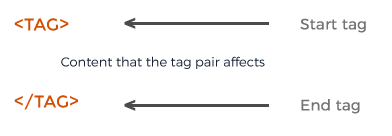HTML
Hypertext Markup Language
The first publicly available description of HTML was a document called "HTML Tags", first mentioned on the Internet by Tim Berners-Lee in late 1991.
Berners-Lee considered HTML to be an application of SGML. It was formally defined as such by the Internet Engineering Task Force (IETF) with the mid-1993 publication of the first proposal for an HTML specification, the "Hypertext Markup Language (HTML)".
Introduction
Hypertext Markup Language is the text markup language currently used on the World Wide Web. The symbols and acronyms used in those editorial markups suggested changes for you to interpret or imlement. In that scenario, markup is seperate from the actual content of your document.
An HTML document is simply a text file that contains the information you want to publish. It is also contains embedded instructions, caled elements, that indicate how a Web browse should structure or present the document.
| HTML Versions | Date and Year |
|---|---|
| HTML 1.0 | 1993 |
| HTML 2.0 | November 24, 1995 |
| HTML 3.2 | January 14, 1997 |
| HTML 4.0 | December 18, 1997 |
| HTML 4.01 | December 24, 1999 |
| HTML 5 | October 28, 2014 |
<title>Skillpundit</title>
</head>
<body>
<p>www.skillpundit.com</p>
</body>
</html>
The <title> and </title> tags pair specifies the title of the document.
This HTML elements generally consist of a pair of angle bracketed tags surrounding some text.
The end tag (</TAG>) is just like the start tag (<TAG>), except that it has a slash (/) in it, as shown here.

